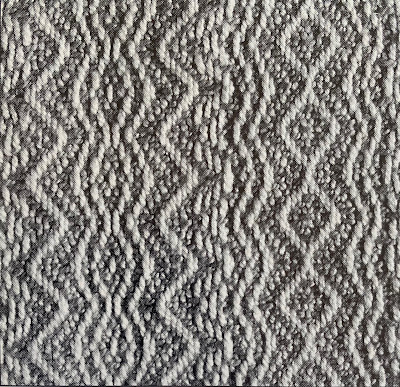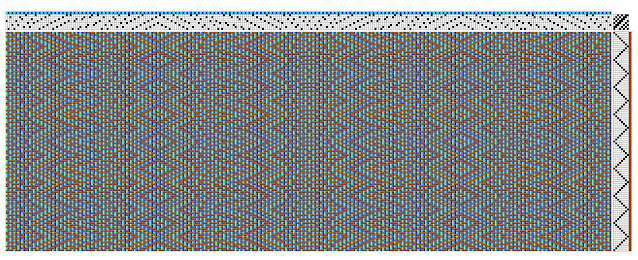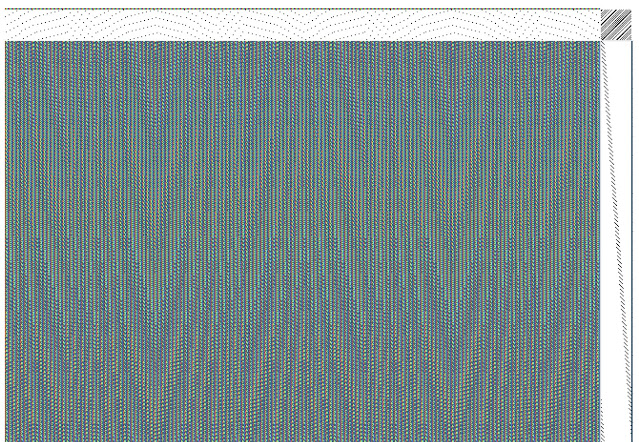 |
Among the 10 or 20 most popular contemporary weaving patterns, Strickler #728 (first photo) is among them, I would guess. I've seen many iterations on Facebook and it never fails to dazzle. And if you "Google" the pattern, the variations go on and on, as you can see in this screen shot from my computer....
Credit goes to Joan McCullough, who designed this intricate, ornate gem -- a Rosepath motif in multiple tabby, which is one of the favorite structures of my "weaving mother," Joyce Robards. (Shout out to Joyce, whose "Many Friends" design appears on the facing page in Strickler.)
It's the endless possibilities for interactions of color and pattern, I believe, that entice most weavers. But for this post, I would like to play with the design potential of #728 using an extended parallel threading, otherwise known as an Echo threading. Once again, McCullough's pattern shines!
The original draft of #728
Above is the original threading, tieup, and treadling you find in Strickler. To create the same pattern in Echo, all you need to do is click on the "Warp" dropdown menu in Fiberworks, choose "Parallel Repeat," then "Overlapping Repeats Shifted by 4," and then "Apply." (Please note that the "Parallel Repeat" command is available only with Fiberworks Silver. Also, I am using a Mac, which has slightly different commands from a PC.)
Here's what you get:
I could see using different-colored stripes in the warp as weavers love to do with the original twill design, so that the linear motifs are outlined and clarified.
What about Jin? Using the same parallel threading, all you need to do is create a 4/4 descending twill tieup and add tabby shots in between. (Note that I changed the weft color to black to emphasize the patterns.)
"Instrestring," as my son used to say when he was a toddler. This may be a bit dizzying, but then again, it all depends on the colors you choose and the function of the piece.
Not much different from Shadow Weave is Rep: same threading, tieup, and treadling. The only changes are that the sett goes from plain weave to denser than double weave and the weft has alternating thick-and-thin yarns.
I like this. Again, I see a lot of potential for playing with different-colored stripes in the warp.
Last, there's double weave, yet another structure that can be designed on an extended parallel threading.
728 in double weave, front
And back, although not much different
McCullough's design comes through in so many variations -- and on just 8 shafts! I got to thinking: I have a 32-shaft Megado, so I wonder what would happen if I expanded the threading to 32 shafts, using a 4-color, 4-end parallel threading?
The way I see it, this pattern is something like Beethoven's Ode to Joy, endlessly pleasing, whether it's performed as a piano solo or with a full symphony and chorus.
And who knows? Maybe I could develop a workshop on this? From Echo to Jin to Shadow Weave to Rep to Double Weave, from 8 shafts all the way to 32...
Thanks for reading!















